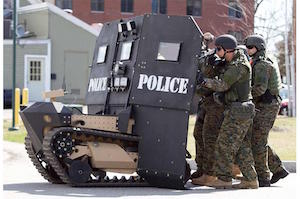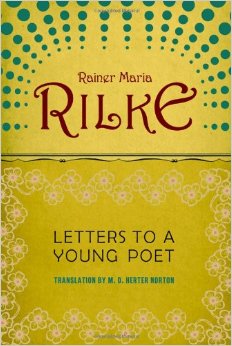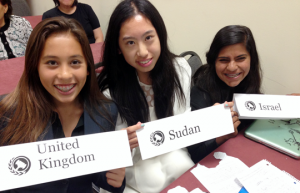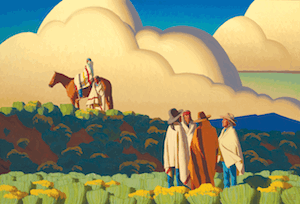Current Events: Helping Kids Live the Questions
A MiddleWeb Blog

It has been heartening to talk about the news every day with these eighth graders, to see their interest in everything from ISIS to gay marriage. It feels as if we’ve had breakfast together each day, reading bits of articles aloud as we finish buttering our toast.
But this morning, I realized why I’m sadder than I thought I’d be: Some unrealistic part of me expected us to solve at least a couple of the issues we’ve discussed.
Yet, of course, the issues are still there.
The world is always with us
In a presentation this morning, Robbie reported that Islamic State has taken over more territory and that U.S. officials are staying the course in their strategy against the group.
Winston talked about reforms in the San Francisco police department following the release of a series of inflammatory texts.

Police brutality still exists. The Islamic State is forging ahead in its dream of a modern caliphate. North Korea still has nuclear weapons and doesn’t seem to be downsizing.
Two steps forward and one step back. One step forward and two steps back.
Throughout the year, I’ve consoled myself by thinking that if students discussed such issues in class, reflected on them in essays, and talked about them at home, that would be enough.
Maybe it is.
And I always tell my students that I expect them to solve such issues when they grow up.
But what can we do right now?
Looking ahead to my next classes
For next year, I’m wondering if there should be more action to go along with the discussion. If so, what might such action look like? Some possibilities…
Participate in Model United Nations, either within our school or at a local competition, to discuss world affairs and write policy resolutions.
- Draft a letter to the editor of a newspaper or to a member of Congress.
- Write an opinion piece about a current issue, incorporating substantial research and building upon their English teacher’s guidance about the structure of a persuasive argument.
- Encourage activism in a political campaign.
- Require students to visit, with their families, one place in L.A. that speaks to the power of citizenship, such as the Japanese-American National Museum or the Museum of Tolerance. Then write about it.
- Read together more memoirs, such as Elie Wiesel’s Night or Jeanne Wakatsuki Houston’s Farewell to Manzanar, that show what the individual can do, personalizing one citizen’s stand against history.
- Read together more literature, such as Jamie Ford’s Hotel on the Corner of Bitter and Sweet or Jonathan Safran Foer’s Extremely Loud and Incredibly Close, that tackle similar issues.
Take more field trips. This year we visited the Los Angeles Times newsroom and City Hall to see the press and the government in action. We could travel to dozens of other places within thirty miles, from the Watts Towers to the Autry National Center of the American West.
Living the questions
Beyond these action steps, I’ll also keep in mind the questions we as history teachers always wrestle with: ideas versus experience, theory versus practice.
How much should we live in our heads by studying, for instance, the inspirational words of Lincoln’s Second Inaugural to “cherish and achieve a just and a lasting peace, among ourselves and with all nations”? And how much should we live in reality, going out into the community to truly strive for that peace?
How much intellectual content do middle schoolers need to understand the broader impact of what they do in the community?
Where on the continuum of service learning do I want my classes to lie, and how do these goals fit into our school’s daily schedule and into other teachers’ curricula and long-term projects?
How can I live out these ideals of citizenship best in my own life, as a model for students?

If you have found a way of “living such questions” that works for you, I would love to know about it!



































I really love your way of thinking about this Sarah! We have seen some interesting projects where students are doing their own public radio style reporting on important current event topics to help them clarify and explore their own opinions. We did a summer project along these lines with a journalism camp that we blogged about here. http://blog.listencurrent.com/2014/08/high-school-students-learn-how-to-create-podcasts/ But we’ve also seen some teachers trying this in their classrooms.
At Listen Current we’ve been thinking about how we can keep kids connected with current events over the summer too. We’ve just launched free summer access to our curated collection public radio, and posted our own summer listening list. http://listencurrent.com/summer_listening
Karen, what a wonderful odyssey you at Listen Current are undertaking! Thank you for the resources. Do you also have links to any handouts or guidelines you have given teachers to help create such podcasts in their own classrooms?
Sarah, I don’t have any published resources to link to but I do have a handout that we used to step kids through the sections of the project. I’m happy to send it to you in email. You can reach me at karen@listencurrent.com .
Wow! What inspiring thoughts about your teaching. I do think it is enough sometimes to “live the questions” and to help students clarify their views and values while reading, discussing, and writing about events. This is how they learn to take informed actions throughout their lives…even conversations with peers and neighbors and voting. You’re developing lifelong habits for these students of being informed and well-versed in current issues. You should be SO proud of the work you’re doing.
Thanks so much, Mary Ann! Your support means a lot.
I read your book, Making History Mine, and I loved it. It inspired me to implement my own weekly current events for my 7th grade civics and my 6th grade world history classes. Overall I felt it went well, but I also feel like I may not have formatted it properly or created a proper way to assess learning at the end. I had three students present every Friday on an article they chose. Most of the presentations were good, but I found that instead of fostering a discussion with all the students, I spent a lot of time answering questions the students had for the presenter that they couldn’t answer which made me the sage on the stage instead of the facilitator that I wanted to be. I would love any suggestions on format, assessment, etc. that you could offer. My email is spasch@goodshepherd.org
Scott, this is such a good question, and thank you for your nice comments. One change I made two years ago is having the students who are not presenting on Fridays also bring in a current events article. They do not present it to the class, but they do annotate 4-5 important points. When the official presentations are over, they pair and share with a classmate for a few minutes to tell the gist of their story. The beauty of this is that every student has spent at least a little time on a news website the night before, and so people beside me can chime in with additional facts. This is the best strategy I’ve found so far, but the current events structure is always evolving.